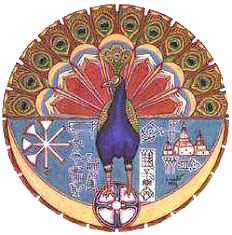|
by Richard Ebbs from RichardEbbs Website
For whatever reason, it’s fair to say
that the idea of human beings being able to fly is something that
has fascinated people since time immemorial. Consequently, images of
human beings with wings can be found across the world in every major
culture. This essay explores the connections between the winged
human motif and ’angels’ in the art and religious thinking of
exclusively ’western’ (i.e. Christian/Islamic/Judaic) cultures, with a
brief look at a number of ’strands’ of thought from
ancient Sumeria
and beyond, to the present-day.
Sumerian society is the oldest society that has left us clear evidence of the use of a winged human motif. This evidence is in the form of stone carvings, either in the form of three-D statues or relief carvings that provide the illusion of three-dimensionality. Sumerian culture flourished around 3,000 BC between the Tigris and Euphrates rivers in present-day Iraq (see below map showing the geographical extent of Sumerian culture).
The religion of these people was complex, embracing a wide variety of spirits and gods, but of particular interest was their belief in ’messengers of the gods’, angelic forces who ran errands between gods and humans.
These Semitic peoples developed the idea of a corpus of angels split into groupings answerable to each of the many Semitic gods, further subdividing these groups into vertical ’ranked’ hierarchies, a notion which persisted into Zoroastrianism and monotheistic Judaism and beyond, as we shall see. Sumerian ideas probably set the scene for the development of Egyptian theology as well, although it is difficult to be clear about the detail of such cross-cultural influences.
Sumerian domination of the Middle East
came to an end around 2,000 BC, when Sumer was defeated militarily
and the
Almost certainly, the motif of a winged
human figure goes back much further than Sumeria even, in fact the
motif almost certainly goes back into the shamanic mists of time.
Recent evidence suggests that this is the case...
The forms of some of the most enduring Egyptian gods can be traced back to the first few dynasties, that is, to around 2,500 BC. In many cases these gods took the shape of some animal, which was regarded as the soul (Ba) of the god Horus, god of the sky, for instance, was represented as a falcon, whereas Thoth, god of the moon and patron of writing, learning and the sciences, was often represented as a man with the head of an ibis. Isis and Maat were often represented with wings as we can see in the two images above and below.
The Egyptian Book of the Dead lists 500 gods and goddesses, and it is possible to identify at least 1200 more deities in later ancient Egyptian writings. Some of these deities were undoubtedly closer to our concept of an angel rather than a god, however: for instance there was at one time a cult dedicated to invoking the help of the Hunmanit, who were a group of entities connected with the sun, portrayed as rays of the sun, rather like the Christian representation of the angel choir of the seraphim.
The Hunmanit had a responsibility to look after the sun, such that by looking after the sun, they were also indirectly fulfilling a responsibility to look after humanity at the same time. Insofar as they were guardians, and angels, it does not seem unreasonable to characterize them as early versions of the guardian angel.
As with the Sumerians, Egyptian
iconography includes ’winged humans’ of one sort or another also:
for instance Isis, queen of all the Egyptian goddesses, is often
represented as a woman with wings. The flowering of Sumerian culture
was
However archaeologists are apparently
not in a position to say clearly whether the winged human motif was
imported into Egypt from Sumeria, or vice versa, or whether it arose
spontaneously and separately in each of the two cultures.
And just as we find the god Mithras (for
instance) popping up in Greece and Central Asia (see next section),
so we find his counterpart Mitra in the Rig-Veda, the most ancient
of all Hindu ’texts’ (that possibly goes back in spoken form to
3,000 BC).
Mithras was a light-bringer god, whose cult flourished between 1500 BC and the time of Christ, in lands as far apart as India and Great Britain, with a basis in what was then known as Persia (see below map of the Persian empire around 500 BC).
Although in his own cult Mithras does not fully conform to the image of ’angel’ that we are particularly interested in here, nevertheless Mithraism was the most prevalent religion in Persia when Zoroaster (qv section below) was alive, and in Zoroastrianism Mithras was considered to be an angel who mediated between heaven and earth, later becoming judge and preserver of the created world.
In Vedic cosmology also (where in the
Rig Veda, Mitra is mentioned over 200 times), Mitra appears
often to be more angel than god. The ’Mithras-cult’ images of Mithras that we
see here are typical close variations on the same scene, where
Mithras fights the sacred bull, with his cloak billowing out behind
him in a way that seems meant to suggest wings. Over and over again
we find Mithras depicted in this way.
Zoroastrianism identifies six main archangels:
Some of these angels/archangels were considered to be male, some were considered to be female, and each one was associated with some particular attribute or quality. On a lower level again the third rank of angels in Zoroastrian cosmology were the Guardian Angels, each one assigned as guide, conscience, protector and helpmate throughout the life of one single human being.
All of the various hierarchies of angels were considered to be divine gifts, all of them aspects or manifestations of the one ’Lord of Light’. Zoroastrians also believed that corresponding to the Lord of Light there was also a Lord of Darkness, with complementary demons and evil spirits, and it was felt that in the battle between light and darkness the forces of light would eventually win.
To demonstrate the lengths to which one must go in an attempt to put together any sort of ’complete’ history of angels, one need only look at some of the terminology: for instance the demons of Zoroastrianism, that are referred to as daevas, exist in opposition to ’angelic’ forces that are referred to as ahuras. In the ancient Hinduism of the Vedas, however, we find demons referred to as asuras, existing in opposition to ’divine’ forces known as devas.
These ’spirits’ appear to have been the basis for what later came to be known as the cherubim and seraphim (associated with wind and fire respectively: -note: did you know that originally the seraphim were believed to have six wings [three pairs] and not just two...(?)
Furthermore, the influence of Zoroastrainism continued throughout the millennium before Christ, with more and more angels (that were more and more ’the messengers of God’) finding their way into Jewish writings. This is what a certain encyclopædia has to say on these particular angels (in a section on Judaism):
The leader of the Hebrew forces of evil (aka shedim) was variously called Satan (the Antagonist), Belial (the spirit of perversion, darkness, and destruction), Mastema (Enmity, or Opposition), and more. Two archangels are mentioned in the canonical Old Testament: Michael, the warrior leader of the heavenly hosts, and Gabriel, the heavenly messenger. Two are mentioned in the apocryphal Old Testament: Raphael, God’s healer or helper (in the book of Tobit), and Uriel (Fire of God), the watcher over the world and the lowest part of hell (qv the book of Esdras).
The development of the idea of Satan as an archdemon in Judaism and Christianity was very likely to have been due to the influence of Zoroastrianism (see above): in the Book of Job the Judaic Satan was merely a prosecutor of men in the court of God’s justice (whereas in a cosmology developed well after the books of the New Testament had been written in Christianity, we find Satan elevated to chief antagonist of Christ and men).
I would urge keen angel-buffs to check out the Old Testament Book of Enoch (probably compiled in stages somewhere between 165 BC and the start of the Christian era) where the story of the fall of the group of angels known as the Watchers is told in some detail.
In Greek mythology the idea of human flight crops up a number of times (for instance with the myth of Icarus, who not only learned to fly but whose ambition took him much too near the sun when he flew...). Greek thought was very inventive on just about every level but there is little doubt that Greece too owed an immense debt to the cultures of Babylon and Egypt (in particular) that preceded it.
In Roman times self-applauding emperors
were sometimes also depicted with halos. (Because of its ’pagan’
origin, however, this convention was avoided in early Christian
art). Throughout the Middle Ages, however (by which time presumably
the origins of the motif had been forgotten) angels were frequently
depicted with circles of golden light surrounding their heads.
Interestingly enough the halo is also found in Indian Buddhist art,
appearing from the 3rd century AD onwards when it is believed that
the motif was brought to the East by Greek invaders.
A number of angels are referred to in the first books of the Old Testament (i.e. the books of the Judaic Torah) but angels are of course also referred to in the Christian New Testament as well, for instance in the Revelation of John, where divine truths are reputed to have been revealed to John of Patmos by an angel, or when the angel Gabriel informs Mary of her forthcoming pregnancy. Another example is when the messiahship of Jesus is reputed to have been proclaimed by angels at his birth.
Clement of Alexandria, one of the early church fathers of Christianity, appears to have been influenced by Hellenistic cosmology when he stated that angels functioned as the movers of the stars and controlled the four elements of earth, air, fire, and water. (A notion taken up later by alchemists in the Middle Ages).
In Christianity ’fallen’ angels have traditionally been referred to as ’demons’, and in the European Middle Ages and the Reformation period, various hierarchies of demons were developed, such as that associated with the seven deadly sins:
In the New Testament we find angels grouped into seven ranks:
And in addition to these were also added the Old Testament cherubim and seraphim (see above), which, with the seven other ranks, comprised the nine choirs of angels referred to in later Christian mystical theology.
Christian cosmology also took on board the notion of a personal, or guardian, angel, an idea, as we have seen, that could have been imported from any number of possible sources (from Zoroastrianism to Judaism to ancient Greece or Egypt).
The concept of a guardian angel is one that has proved remarkably ’durable’: it is not uncommon to this day for a Catholic to say a prayer to their ’holy guardian angel’: a practice that the church hierarchy has not discouraged.
Islam
Islam has it’s own implicit cosmology nonetheless, and much of this is borrowed either from the cosmology of ’the Judaism of the prophets’ (that is, borrowed from the beliefs of the Semitic peoples of the Middle East after 450 BC) or it is borrowed from Zoroastrianism, a belief system that predates Islam and which Islam replaced in many places.
Other well-known examples are Jibril (Gabriel), the angel of revelation; Mikal (Michael), the angel of nature, who gives man both food and knowledge; Izrail, angel of death; and Israfil, the angel who sounds the trumpet on the day of the Last Judgment. [PS if there are any etymologists out there who can demonstrate a connection between the Arabic word ’jinn’ and the Greek word ’genius’ I would love to hear from them...].
Whilst the absence of concrete
iconography in Islam makes it more difficult to track the
importation of imagery from earlier religions, we can nonetheless
find echoes throughout Islamic literature: a good example perhaps
being the Conference of Birds by Attar-e Neyshaburi, who was a
famous 12th C Muslim mystical poet and thinker, which is an extended
metaphor for the journey of the soul towards divinity, each bird in
the story representing the soul of an individual. This echoes very
ancient Central Asian beliefs that go right back to the shamanism of
the Neolithic era.
Even today, after all of the political and cultural upheavals of the last two centuries, pockets of shamanic belief and practice have survived across Asia, from Tibet in the east, to Lapland in the west, to Siberia in the north. In Central Asia shamanism appears to have disappeared in most places for at least a millennium. (One exception, where shamanism survived the process of Islamisation, is Kazakstan, an area somewhat on the fringes of the Islamic world, both culturally and geographically).
There is a degree of conjecture here, of course, a situation compounded by the fact that the archaeology of Central Asia has really only gained a global audience in the last 30 years, with many new findings from digs in the ’stans’ of Central Asia (Kazakstan, Uzbekistan, Turkmenistan, etc) only recently coming to light, along with new work in such places as Anatolia and Kurdistan further west.
All of this work is helping archaeologists push backwards with a clearer gaze into the past, particularly into a pre-Sumerian Neolithic past. One small aspect of these ancient cultures that has come to light, which is relevant here however, is an apparent shared interest in birds as an important aspect of the belief systems of these peoples.
The image above shows an impression of a room called the ’vulture shrine’ in the town of Çatal Hüyük, a fascinating site still being excavated at Anatolia, Turkey. (See also William J. Gilmore-Lehne’s Study of Çatal Hüyük). Çatal Hüyük culture dates back to 6,500 BC (a long time ago to be sure) and yet these people were (perhaps) surprisingly sophisticated. The vulture image appears to represent for them a god-form, responsible for removing the head (i.e. the soul?) of the deceased, as can be seen in the picture above.
They may have practiced ’sky-burials’ (where corpses are left to the birds to eat) or the imagery may have been entirely metaphorical, or both. There is some evidence to suggest that over time as this culture developed the bird image evolved into that of a ’vulture-goddess’. But most importantly one of the murals from Çatal Hüyük apparently shows a human being dressed in a vulture skin.
Both of these qualities are (also)
universally considered to be the main attributes of a shaman.
Undoubtedly this also helps explain why shamen across the
world generally tend to have a strong connection with birds. The
shaman can ’fly’ in trance,
With all of this in mind, intuition tells us that the iconography of angels ’surely must’ be rooted in the ancient shamanic cultures of Central Asia, predating even the culture of the Sumerians in the fourth millennium BC. It is so easy and so tempting to think that ’surely’ the image of a shaman, resembling a bird, traveling in trance to the realm of the gods and back again, ’must’ have given rise to the original ’angel motif’.
But intuition in archaeology can give rise to all manner of whacky theories (for instance the Victorian belief that the big flat stone at the centre of Stonehenge was for sacrificing virgins). We should always careful of making assumptions when the evidence in support of our pet theories is tenuous.
In the 1950’s the archaeologist/anthropologists Rose Solecki and her husband Ralph began excavating a cave site near the Greater Zab river in Kurdistan. This cave had been used for burials by the Zawi Chami people (as this small area is called) around 8870 BC (plus or minus 300 years, according to carbon-dating) which is perhaps 4,000 years before the beginnings of the Sumerian culture referred to here. What did they discover that was so significant?
They found a number of goat skulls placed next to the wing bones of large predatory birds, including the bearded vulture, the griffon vulture, the white-tailed sea eagle and the great bustard. The Soleckis had to ask themselves what the purpose of such a ’ritual burial’ was, and why it was that only certain species of birds had been selected.
Recognizing the importance of their discovery, however, Rose Solecki concluded the article by saying
Kurdish scholar Mehrdad Izady agrees that the predatory bird remains of the Shanidar cave can be seen as evidence of a shamanistic culture whose memory influenced the development of the very notion of an angel. Within living memory Kurdistan has been home to three indigenous angel cults, the most famous being the Yezidis of Iraqi Kurdistan. Their belief system centers on supreme angelic being named Melek Taus, the ’peacock angel’.
Melek Taus is often depicted in the form of a strange bird icon known as a sanjaq, although the oldest known sanjaqs are apparently not peacocks at all, having bulbous avian bodies and hooked beaks. Izady has suggested that the sanjaq idols may actually be representations predatory birds similar to those (apparently) venerated by a shamanic Zawi Chami people.
Creation Myths From Central Asia To Anatolia: Images From The Creation Myths Of The Turks by Can Göknil.
One last word: ’do I think angels exist?
-I’m agnostic! But what does seem certain is that culture is the
main factor determining the way in which people ’see’ angels.
Objectivity lies in one direction, subjectivity in another, with
’experience’ somewhere in the middle...
|

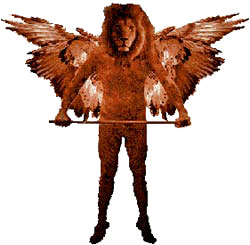

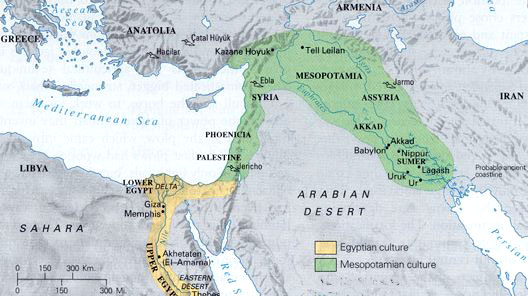
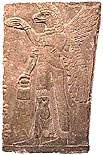 overlapping
Assyrian and Babylonian cultures took over. Winged figures can also
be found among the icons of ancient Assyria and Babylonia.
overlapping
Assyrian and Babylonian cultures took over. Winged figures can also
be found among the icons of ancient Assyria and Babylonia. 
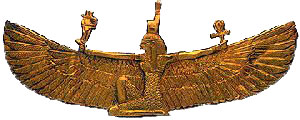

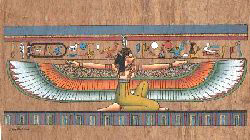 contemporaneous
with the first few dynasties of the great culture of ancient Egypt,
around 2,500 BC, and archaeologists incline to the view that there
was a traffic not only of artifacts, but also of ideas and
iconography between Sumeria and Egypt before the time when Sumerian
influence declined (around 2,000 BC).
contemporaneous
with the first few dynasties of the great culture of ancient Egypt,
around 2,500 BC, and archaeologists incline to the view that there
was a traffic not only of artifacts, but also of ideas and
iconography between Sumeria and Egypt before the time when Sumerian
influence declined (around 2,000 BC). 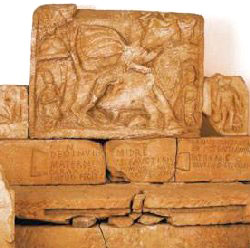
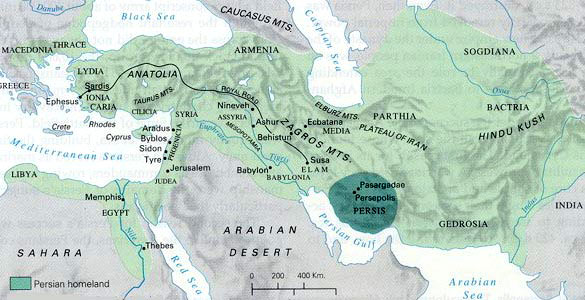
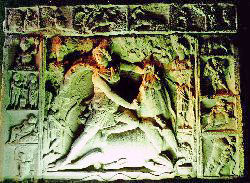
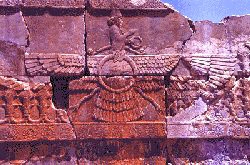
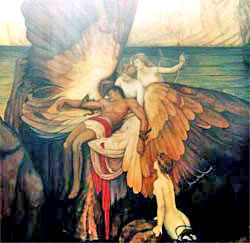
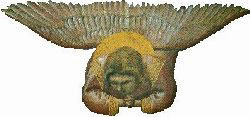
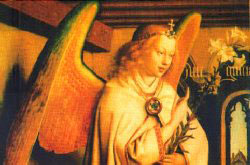
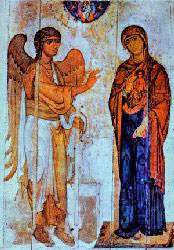
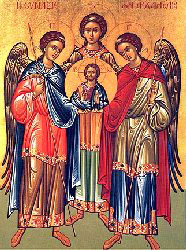
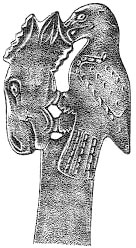
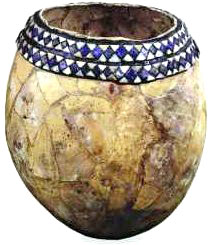
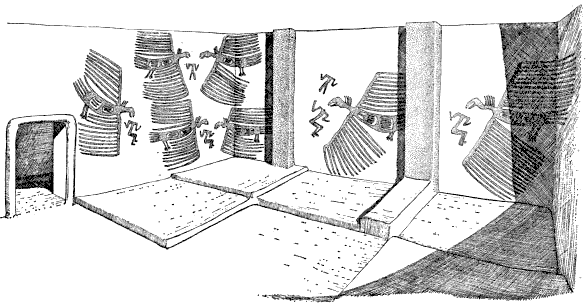
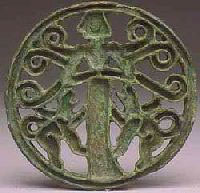 travelling
to the realm of the spirits where he can then either do battle
against malign entities, or try and persuade, flatter, cajole or
otherwise entreat the spirits to act for the benefit of one or more
human beings.
travelling
to the realm of the spirits where he can then either do battle
against malign entities, or try and persuade, flatter, cajole or
otherwise entreat the spirits to act for the benefit of one or more
human beings. 